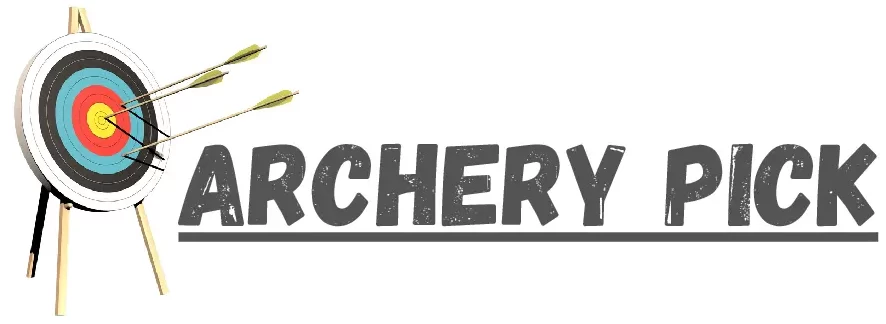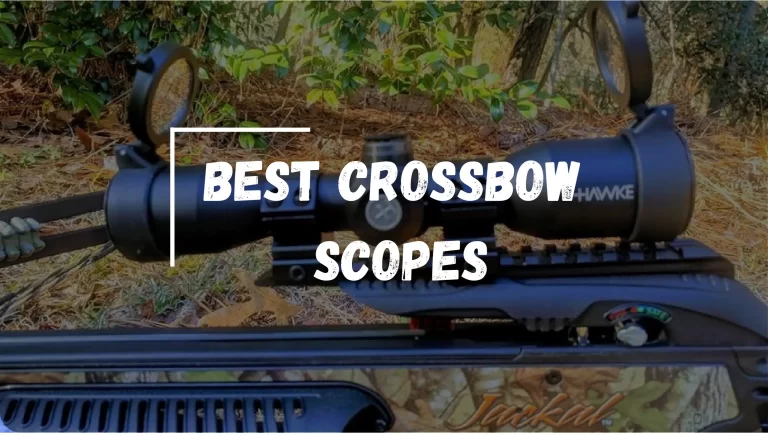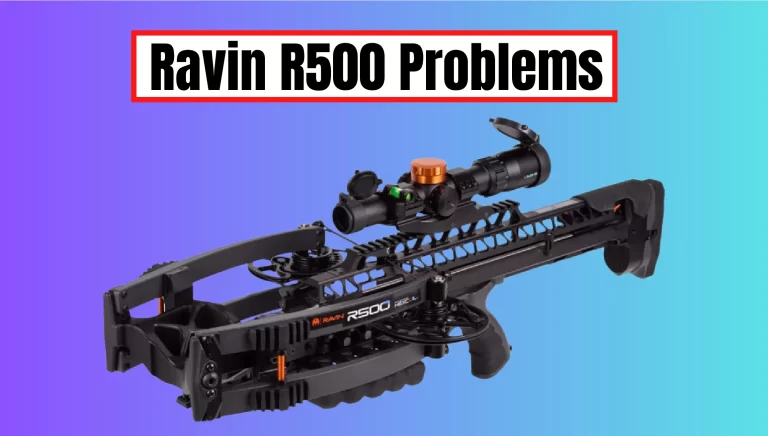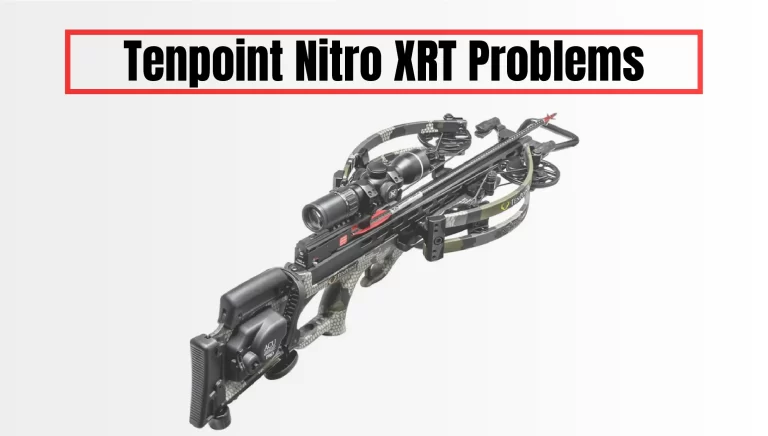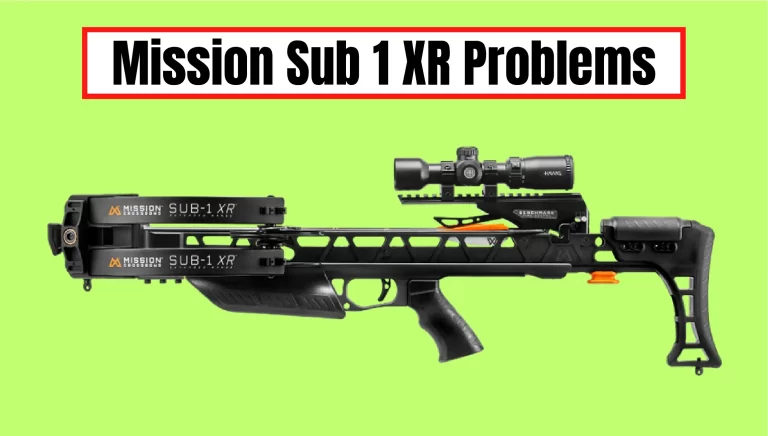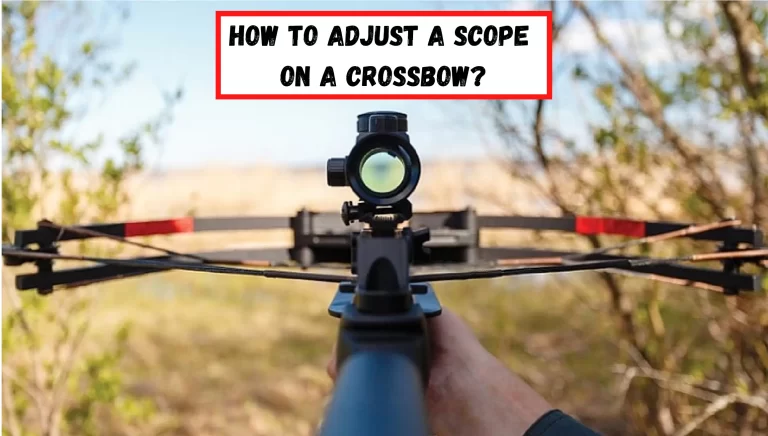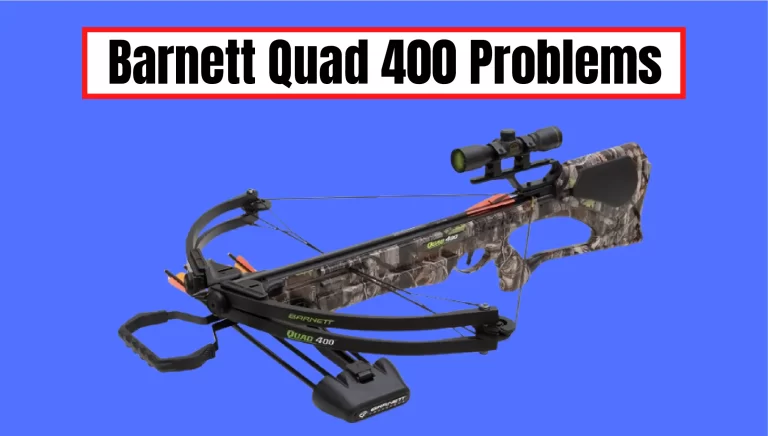How Far Can Crossbows Shoot? – [Exploring the Limits]
"As an Amazon Associate, I earn from qualifying purchases. This post contains affiliate links"
Crossbows have come a long way since their invention in ancient China, but one question still lingers in the minds of enthusiasts and hunters: how far can crossbows shoot? The answer may surprise you.
Crossbows can shoot as far as 500 yards, but that doesn’t mean these crossbows should be used at such distances. A skilled shooter can reach up to 80 yards for hunters, but for beginners, it’s best to stick to a maximum of 60 yards, preferably much less (30-35 yards).
But the range isn’t the only factor to consider regarding crossbows. In this article, we’ll explore the many variables that affect crossbow range, the different types of crossbows, and the safety considerations you should know before firing your equipment.
So whether you’re a seasoned crossbow shooter or a curious beginner, keep reading to find out how far crossbows can shoot and what it takes to hit your target with precision and accuracy.
You Might Also like to Read: How To Adjust A Scope On A Crossbow?
Factors That Affect Crossbow Range
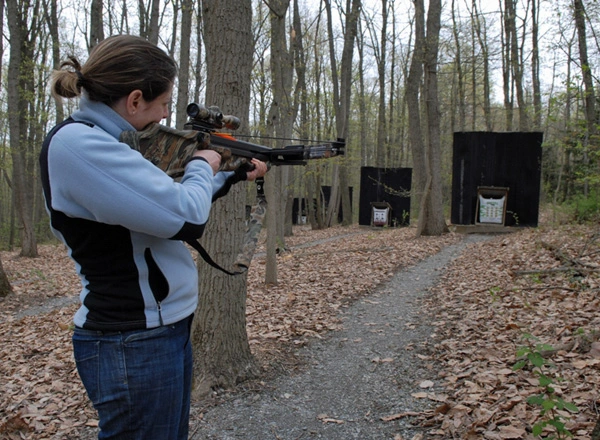
The range of a crossbow is influenced by several factors, including its draw weight, power stroke, bolt weight, fletching, arrow velocity, and kinetic energy. Understanding these factors is essential for achieving maximum accuracy and range with your crossbow.
Draw Weight and Power Stroke: How Much Energy is Behind the Bolt?
The draw weight of a crossbow is the amount of force required to pull back the string and cock the bow. The greater the draw weight, the more energy is stored in the bow, translating to a faster and more powerful shot.
The power stroke refers to the distance the string travels from the rest to the fully drawn position. A longer power stroke means more energy is stored, resulting in a more powerful shot.
Bolt Weight and Fletching: Finding the Right Balance
The weight of the bolt or arrow is another essential factor to consider when it comes to crossbow range. A heavier bolt will travel slower but carry more kinetic energy, while a lighter bolt will travel faster but carry less energy.
Fletching, the material attached to the back of the bolt to aid in stabilization and accuracy, can also affect range. Finding the right balance between bolt weight and fletching is crucial for achieving maximum precision and range.
Arrow Velocity and Kinetic Energy: How Fast Can It Fly?
The combination of the draw weight, power stroke, bolt weight, and fletching determines the arrow’s velocity. The higher the velocity, the farther the arrow can travel. Kinetic energy is the energy the arrow carries when released from the crossbow.
The greater the kinetic energy, the more damage the arrow can do to the target. Balancing arrow velocity and kinetic energy is critical for achieving optimal range and accuracy.
Understanding the factors that affect crossbow range is essential for achieving maximum accuracy and distance with your equipment. By considering draw weight, power stroke, bolt weight, fletching, arrow velocity, and kinetic energy, you can fine-tune your crossbow for optimal performance.
Types of Crossbows and Their Effective Range
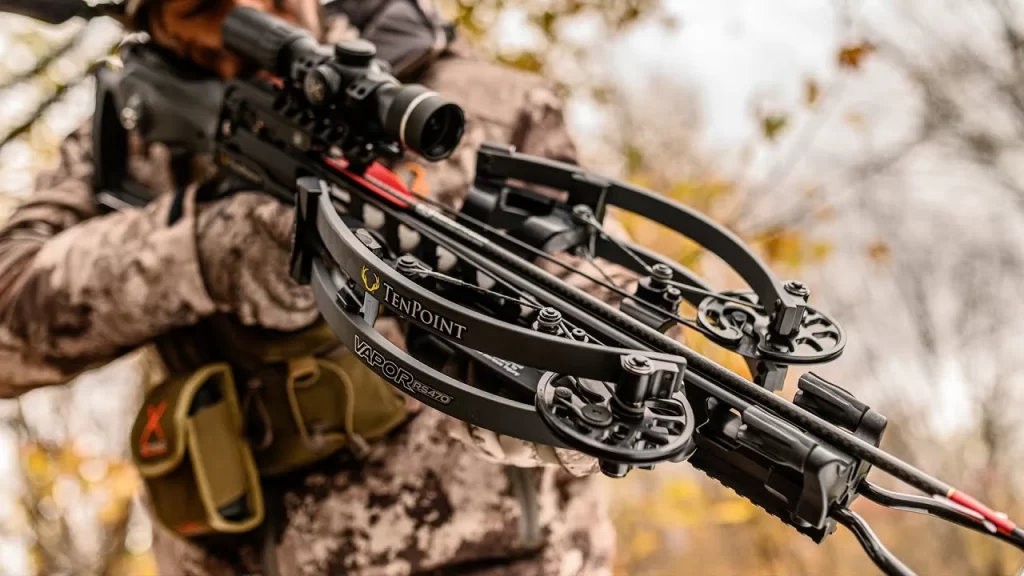
Crossbows come in different designs, each with unique features that affect their range and accuracy. Understanding the characteristics of each type can help you choose the right crossbow for your hunting or shooting needs.
Recurve Crossbows: The Classic Design
The recurve crossbow is a classic design that has been around for centuries. It features a traditional bow shape with limbs that curve away from the shooter.
Recurve crossbows are popular among hunters and shooters who prefer a more traditional look and feel. They are generally lighter and easier to maneuver than other crossbows but have a shorter effective range.
Compound Crossbows: Greater Speed and Accuracy
The compound crossbow is a more modern design that uses a system of pulleys and cables to reduce the force required to draw the bowstring back.
This results in a more powerful shot with incredible speed and accuracy than other crossbows. Compound crossbows are generally heavier and more expensive than recurve crossbows but offer a longer effective range.
We have already made an article about How To String A Compound Crossbow By Yourself? which I recommend you to read.
Reverse Draw Crossbows: The Latest Technology
The reverse draw crossbow is the latest technology in crossbow design. It features a unique limb configuration where the limbs curve towards the shooter rather than away from them.
This design allows for a longer power stroke and more excellent energy storage, resulting in a faster and more powerful shot.
Reverse-draw crossbows are generally more compact and more accessible to maneuver than other crossbows. They also offer a longer effective range than recurve crossbows but are more expensive than traditional compound crossbows.
Testing Crossbow Range
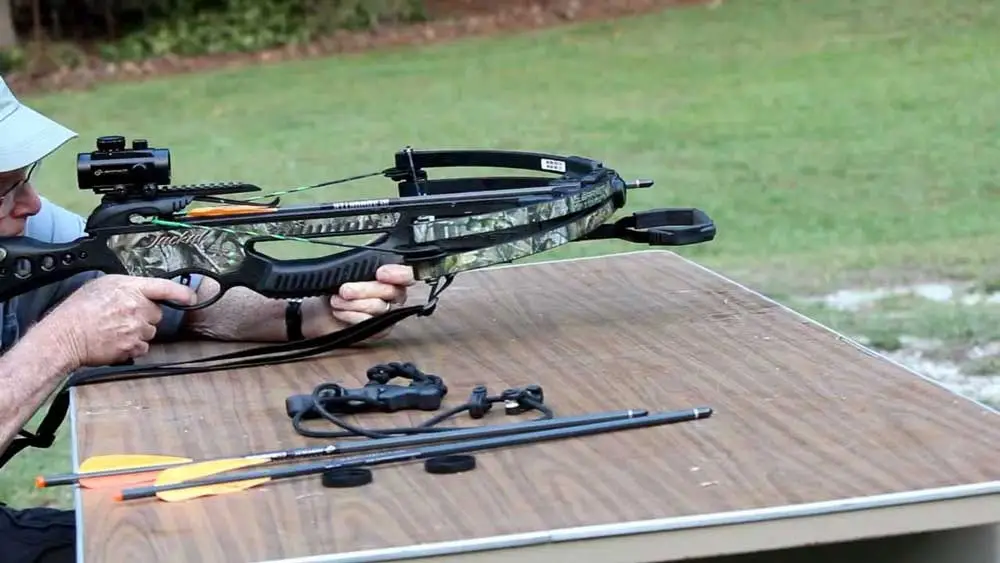
Once you have selected your crossbow, testing its range and accuracy is important. Knowing the effective range of your crossbow can help you determine the maximum distance you should shoot when hunting or target shooting.
Testing the accuracy of your crossbow can also help you identify any issues with your equipment or shooting technique.
How to Measure Distance and Accuracy?
To test the range and accuracy of your crossbow, you will need to measure the distance between you and your target.
You can use a rangefinder or other distance-measuring device to get an accurate measurement.
Once you have determined the distance, shoot several bolts at the target and record the results. This will give you an idea of your crossbow’s effective range and accuracy.
The Role of Wind, Gravity, and Elevation
When testing the range and accuracy of your crossbow, it is important to consider external factors such as wind, gravity, and elevation.
Wind can cause the bolt to drift off course, while gravity can affect the bolt’s trajectory as it travels through the air.
Elevation can also affect the range and accuracy of your crossbow, as shooting from a higher or lower position can change the angle of the shot.
The Importance of a Steady Hand and Proper Form
In addition to external factors, the steadiness of your hand and the proper form are critical to achieving accurate shots.
Proper stance, grip, and follow-through are all important elements of shooting a crossbow accurately. Practicing proper shooting techniques can help you achieve consistent accuracy with your crossbow.
- Expert Picks: Best Crossbow Broadheads for Hunting.
Crossbow Range Records and Achievements
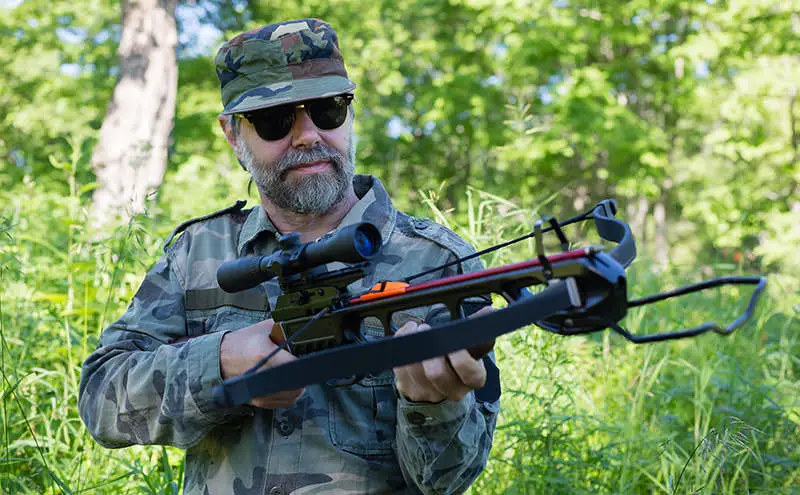
Crossbow range records and achievements provide a fascinating look into the evolution of crossbow technology and the skill of crossbow shooters over the centuries. From ancient military campaigns to modern-day hunting expeditions and competitions, crossbows have hit targets at increasingly longer distances.
Historical records of crossbow ranges are filled with remarkable stories of long-range shots made by skilled crossbowmen. The longest confirmed crossbow shot in history was made by a soldier named Thomas de Mahy, Marquis de Favras, during the siege of Corfu in 1716. He reportedly hit a Turkish soldier from a distance of 482 yards (441 meters).
In modern times, crossbow shooting has become a popular sport and hunting activity. Competitions and events are held worldwide, where shooters can show their accuracy and range of capabilities. The current world record for a crossbow shot is held by Randy Oitker, who hit a target from 930 yards (850 meters) away in 2016.
As crossbow technology continues to improve, and with the introduction of new materials and designs, it’s only a matter of time before new range records are set. Perhaps one day, we’ll see a crossbowman break the 1,000-yard mark and take crossbow shooting to new heights.
Choosing the Right Crossbow for Your Needs
When choosing the right crossbow for your needs, there are a few factors to consider. Whether you’re looking for a crossbow for hunting, target shooting, or recreational use, it’s important to find one that suits your needs and skill level.
Hunting Crossbows: Power, Accuracy, and Stealth
For hunting, you’ll want a crossbow with enough power to take down your prey with one shot. Look for a crossbow with a high draw weight, power stroke, and fast arrow speed.
Accuracy is also important, as you’ll need to hit your target in a vital spot for a humane kill. A quiet and compact crossbow will help you remain stealthy in the woods.
Target Shooting Crossbows: Precision and Consistency
For target shooting, precision and consistency are key. Look for a crossbow with a smooth and predictable trigger and a lightweight and comfortable design that allows for easy aiming and shooting. A crossbow with a high arrow velocity and kinetic energy can also help improve your accuracy.
- From Our Experience: The Best Crossbow Under $500.
Recreational Crossbows: Fun and Safety for All Ages
For recreational use, a crossbow that is safe and easy to use is essential.
Look for a crossbow with a lower draw weight and power stroke that is suitable for your skill level and a design that is comfortable and easy to handle.
Additionally, follow all safety guidelines and wear proper protective gear while using a crossbow for recreational purposes.
Safety Considerations When Using a Crossbow
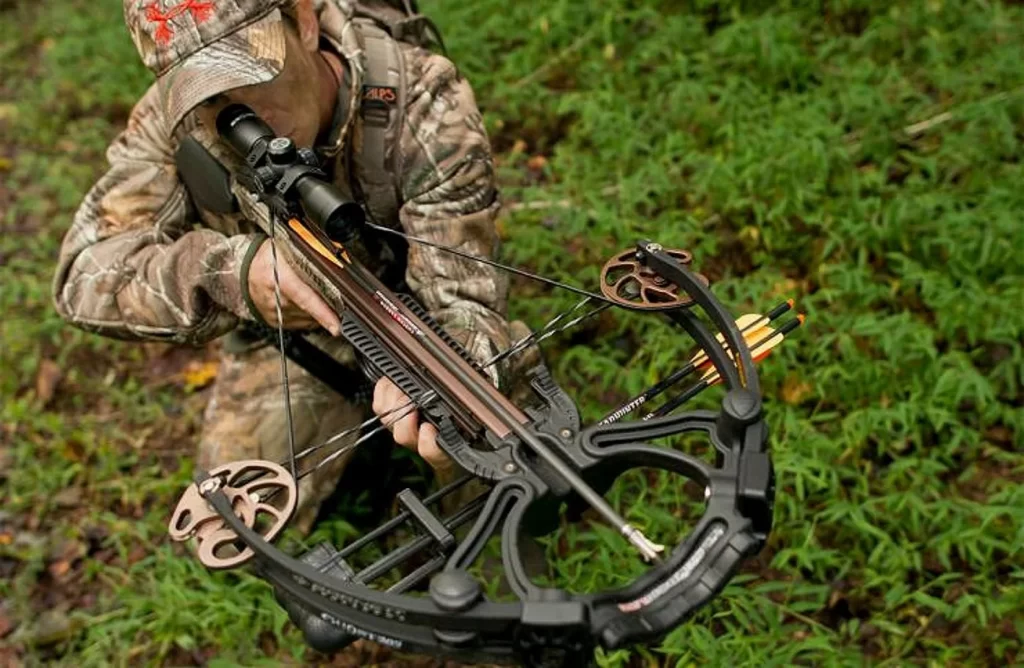
Crossbows can be a fun and rewarding hobby, but they must be handled with care and respect. Here are some safety considerations to keep in mind when using a crossbow:
Basic Safety Rules: Never Point at Anything You Don’t Intend to Shoot
This is perhaps the most important safety rule when using a crossbow. Always ensure the crossbow is pointed in a safe direction, and never point it at anyone you do not intend to shoot. Even if the crossbow is not loaded, it is important to treat it as if it is.
We have created a guide that covers: How Should A Hunter Safely Unload A Crossbow?
Proper Handling and Storage: Keeping Yourself and Others Safe
When not in use, crossbows should be stored properly in a secure location outside the reach of children and other unauthorized persons.
When handling a crossbow, always keep your fingers away from the trigger until you are ready to shoot, and always make sure the safety is engaged when the crossbow is not in use.
Legal Requirements: Know the Laws Before You Start Shooting
Before you start shooting your crossbow, it is important to know the laws and regulations in your area regarding crossbow use.
Some areas may restrict when and where crossbows can be used, and failure to comply with these regulations can result in fines or other legal consequences. Always research and ensure you comply with local laws and regulations.
How Far Away Can You Shoot a Deer with a Crossbow?
So, you’ve got your crossbow in hand, and a deer is in your sights. The big question on your mind might be, “How far away can I effectively and ethically take this shot?”
First up, let’s talk about the power of modern crossbows. These babies can shoot bolts at speeds ranging from 300 to 400 feet per second. Impressive, right? But hold your horses! Speed isn’t the only factor here.
For many hunters, the sweet spot for shooting a deer with a crossbow is within 30 to 40 yards. Why? Several reasons. First, the closer you are, the better your chances of hitting a vital area for a quick, humane kill. Second, bolts lose power and accuracy over distance. The farther the bolt has to travel, the less likely you are to get a clean shot.
And don’t forget the wild cards—wind, bolt drop, and good ol’ human error. All of these can mess up your shot, especially at greater distances.
In a nutshell, while your crossbow might have the technical capability to shoot further, ethical considerations suggest keeping your target within 40 yards. This distance maximizes your chances of a clean, humane shot while minimizing the risk of wounding the animal.
Last Minute Thoughts!
Crossbows are powerful equipment capable of shooting arrows at impressive distances, and their effective range can vary depending on various factors, such as draw weight, bolt weight, and arrow velocity.
Understanding the factors that affect crossbow range, the different types of crossbows available, and the safety considerations when using them is crucial for anyone interested in this exciting hobby.
By choosing the right crossbow for your needs and following the basic safety rules and legal requirements, you can enjoy the thrill of crossbow shooting while keeping yourself and others safe. So, grab your crossbow, practice your aim, and explore these fascinating equipment limits.
Thanks For Visiting!
Related Articles:
